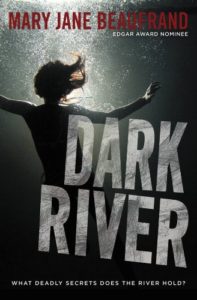I mentioned a couple weeks ago that I had jury duty. I thought some people might be curious how it all works, so I figured I’d post about my own experiences (in King County, Washington).
I’ve been called to jury duty three times now (in the four and a half years I’ve lived in the Seattle area—actually in the less than three years since I’ve moved to my current house, now that I’m thinking about it.) I heard a rumor that King County’s random number generator is crap, because there are some people that just get called all the time. Great…
So the way jury selection works, you are first in the large pool of all available jurors. Then some of you are selected to be considered for a particular trial and given a number. You become one with that number. They line you up outside the courtroom in numerical order (it’s a lot like how you lined up for the bathroom in elementary school, really) and then you file in and sit in your number’s assigned spot, where there’s usually a plastic number card. They put you in order so that the judge can count off left to right, front to back. The courtroom also contains the judge, the prosecutor, the defense attorney, and the defendant (for a criminal trial—I’m not sure what everyone is called in a civil trial). The crux of it is that the lower your number, the more likely you are to be selected, because they fill the jury box in numerical order, as well.
Then they begin a process called voir dire. This is the process of actual jury selection, when they are trying to determine if any of the jurors would make a bad juror. It’s pretty involved and takes a while. The first step is to be sworn in, just like on TV. You have to raise your right hand and say “I do” at the appropriate time. Then the judge reads a long-winded set of information and instructions, before asking a series of relevant questions of the jurors (“Does any juror believe they have an undue hardship and cannot be a juror on this trial?”; “Does any juror have any family or close friends who work in law enforcement?”; “Does any juror have any strong feelings, one way or the other, about alcohol consumption?”) and then the two lawyers are provided the opportunity to ask questions, as well. If you feel a yes in response to the question, you have to raise your plastic number card and the judge and lawyers write down your number and enquire on details later. After all the questions have been asked, the judge goes through each of her questions with each juror who’d raised their number.
Each lawyer has the ability to request a juror be excused “for cause” an unlimited number of times. The judge decides whether or not to excuse the juror (in my experience, they always said yes). Each can also make a set (and limited) number of “peremptory challenges” against jurors, where they do not have to give a reason to have a juror excused. Again, the judge makes the final decision (also, always granted in my experience). Requests for dismissal for cause are usually for fairly obvious biases, like for the juror at one of mine who pointed out that as a black man, he inherently distrusts the police and would always find their testimony suspect. Peremptory challenges are usually made in more subtle cases, where one of the lawyers feels a juror would be bad for their case. From my perspective, it wasn’t always clear why.
The first time I was called, I was first considered but not selected for a civil case. Then I ended up on a jury for a DUI case. It turned out to be super-straightforward because the breathalyzer results were a slam-dunk for the prosecutor. The defense’s approach was to try to convince the jury that the margin of error for each stage of the breathalyzer added up could have accounted for his score. This is important, because the “burden of proof” is on the prosecutor to “prove beyond a reasonable doubt” that the defendant is guilty. If, for instance, the legal limit is 0.08 and his score was 0.10, but there are three stages to the breathalyzer and the margin of error for each is 0.01, then the point is it is possible that his true score was only 0.07, if he were really unlucky. That might provide reasonable doubt. Then the jury would have had to consider the testimony of the arresting officer and his observations and field sobriety tests. However, in my case, the addition they did was actually wrong and the total amount of possible error was still not high enough to account for a belo-the-limit score. Basically, they did bad math and hoped the jury didn’t notice.
Something funny did happen during that trial, though. There were 7 of us because they always pick 1 (more for larger juries) alternate, who has to stay for the whole trial but is released before deliberations begin. The point of this person is to cover in case another juror goes away for some reason. But in the DUI trial, at the beginning of the second day, juror #1 was asked to leave, so we were down to just 6. So no more alternate. We didn’t know why that had happened until juror #2 told us he’d seen her actually fall asleep during the testimony of the state trooper. Apparently the judge had noticed, too.
This time, I was initially being considered for a 2-week trial regarding a gun assault and very much did not want to be on that case. I was juror #43 of the 50 they’d brought in for a 14-person jury. I raised my card for the question, “Does anyone have any strong feelings, positive or negative, about guns?” and told the court that, “I really, really hate guns.” They always ask in response, “Will that affect your ability to be impartial in this case?” Of course, the answer is no, but I still suspect the defense would have given me a peremptory challenge if they’d gotten to my number. I ended up not being selected for it, anyway. They got up to juror #32 because of all the dismissals.
The trial I did get picked for was regarding an attack the (female) defendant was alleged to have committed against a (female) bartender. I was juror #17 for a 6-person jury, and the highest number picked. They finished all the voir dire questioning and sent us off to jury rooms and then came back and told jurors #14 and #17 to stay. This was different from how the selection went in the gun case because there we were all in the actual courtroom as they went through the dismissals. But for this case, it was all behind closed doors. I guess the point is that every judge is different.
The case itself was interesting. I won’t say much because in the end, I was the alternate and so did not stay for deliberations. I don’t know what they decided. But also, there was a small chance a mistrial was declared because of a mistake that was made I guess by the judge. When they sent us into the jury room after the closing arguments, they forgot that one of us was an alternate. One of the other jurors asked the clerk about it and she was shocked when she realized he was right, so they told us not to discuss the case. When I left, the judge asked me if we had discussed it and I think instead of saying definitively no (which was true), I said something stupid like, “We didn’t get far,” because I was nervous in the setting (the judge, the lawyers, and the defendant all standing there, and then the clerk asking me for my phone number all at once). Assuming the trial continued, I guess if one of the jurors hadn’t come back after lunch, I would have been called back in.
One thing I can say is that drunk people do not make good witnesses (as in people who were drunk at the time of the alleged crime—obviously people drunk on the stand would be bad, too).

on Amazon US
















